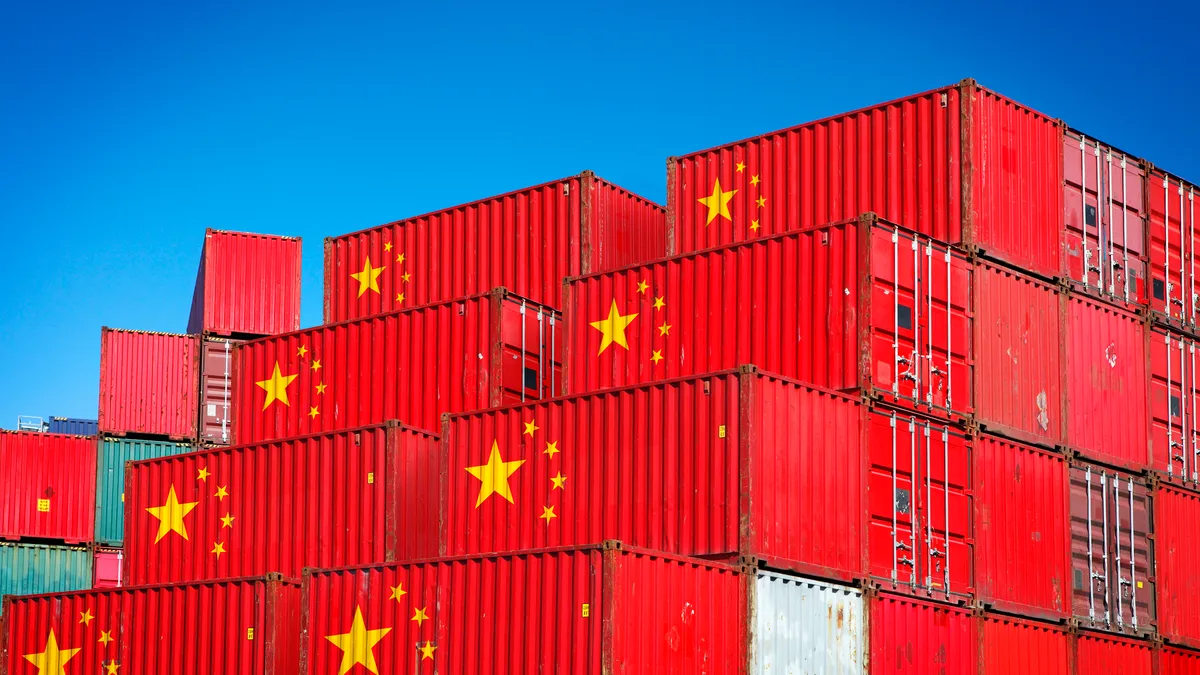Dive Brief:
- China will cut tariffs in half on $75 billion worth of imports from the U.S., according to a translation of a statement from China's Ministry of Finance. The changes will take effect Feb. 14.
- The move follows the Trump administration's announcement during the signing of a phase one trade deal to reduce the tariff rate from 15% to 7.5% on Feb. 14 on about $120 billion worth of imports from China.
- China's decreased duty rate will apply to goods that faced tariffs starting Sept. 1, 2019. Tariffs of 10% will reduce to 5%, and 5% will reduce to 2.5%, the Ministry of Finance statement said.
Dive Insight:
Cutting back tariffs, as part of the phase one trade deal between the U.S. and China, represents a thawing of tensions between the two nations and will offer relief for many U.S. exporters and Chinese importers.
Experts told Supply Chain Dive the trade war and tariffs put supply chain managers on high alert, despite an apparent easing of tensions. Many businesses have prioritized geopolitical factors in their risk mitigation strategy, and they don't expect businesses to reverse course even if the U.S. and China eliminate more tariffs.
Agricultural producers in the U.S. have struggled as Chinese buyers seek products such as soybeans from nations without tariffs, namely Brazil.
China agreed to purchase an additional $200 billion of goods from the U.S. over two years as part of the trade deal, including $12.5 billion in agricultural products such as cereals, cotton, dairy products, meat, seafood and soybeans.

Because of the purchase agreement, Chinese buyers benefit from lowered import taxes on goods from the U.S.
"It would be inherently contradictory public policy to want more Chinese purchasers to buy American products and yet at the same time to make them more expensive than necessary because of such tariffs," Nelson Dong, senior partner at Dorsey & Whitney, said in an email.
Still, the trade war is far from over. The deal reduces tariffs on billions of dollars worth of goods but does not eliminate them. Tariffs on many agricultural exports to China are not entirely cut in half because the products faced tariffs in earlier rounds, which will remain at the same rate. As a result, the aggregate soybean tariff will fall from 30% to 27.5%, according to Bloomberg, and aggregate tariffs on beef, chicken and pork will drop from 35% to 30%.
China will have to follow through on the agreements outlined in the deal, which some analysts have noted is a tall order.
"In 2017, the U.S. exported approximately $170 billion to China, so the deal would require China to essentially more than double its purchases of U.S. products in the next two years, an outcome that is unrealistic at best," an analysis from Brookings stated. Quarantines and production stoppages due to the coronavirus outbreak in China could make the purchase requirements more difficult to meet.
Analysts and businesses are awaiting further details on phase two of the U.S.-China trade deal. In January, Treasury Secretary Steve Mnuchin said phase two would not necessarily be a "big bang" that eliminates all tariffs, according to The Wall Street Journal.
"The next step of adjustment depends on the development of the Sino-US economic and trade situation," China's Ministry of Finance said. "We hope to work with the United States towards the ultimate elimination of all tariff increases."













